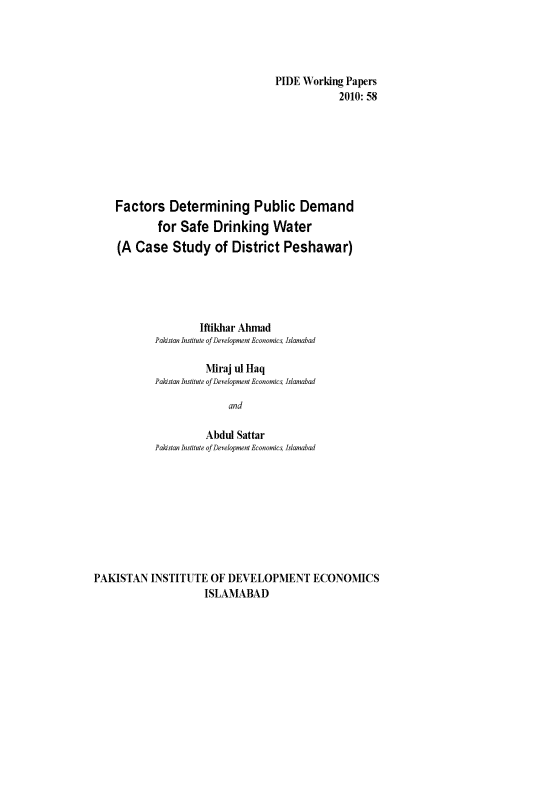
Pakistan Institute of Development Economics
- Home
Our Portals
MenuMenuMenuMenuMenuMenuMenu - ResearchMenuMenuMenuMenuMenuMenuMenu
- Discourse
- The PDR
- Our Researchers
- Academics
- Degree Verification
- Thesis Portal
- Our Portals
Factors Determining Public Demand for Safe Drinking Water (A Case Study of District Peshawar)
Overtime per capita water availability in the world as well as in Pakistan has been declining. Water sources have depleted and become polluted therefore, now water has become a scarce good. Resultantly, the inadequate water supply, sanitation, and hygiene are rooting major environmental degradation and health damages in the country. This study was undertaken to analyze the magnitude of awareness, perception, practices, and demand for safe drinking water. The study further elaborated HHs Willingness to Pay (WTP) for improved water quality and services in district Peshawar of NWFP, Pakistan. Primary data was collected from 315 HHs which consist 2455 HH members from district Peshawar. Schooling, exposure to mass media, HH income and occurrence of diarrhoeal diseases were used to measure the HHs’ response towards the health risks associated with contaminated water. Moreover, to find out public acceptability to government and private sector as service providers, HH’s were asked two separate questions regarding their maximum willingness to pay for an improved water system by either one. Out of the sample HHs, 78.4 percent were willing to accept improved water system provided by government while relatively less HHs (55.6 percent) were WTP in the case of private company as the service provider. It is worth mentioning that according to sample about 76 percent HHs were not using any method for water purification at their homes in district Peshawar. This study empirically proved that the role of awareness besides the income constraint is the key determinants of demand for safe drinking water.



